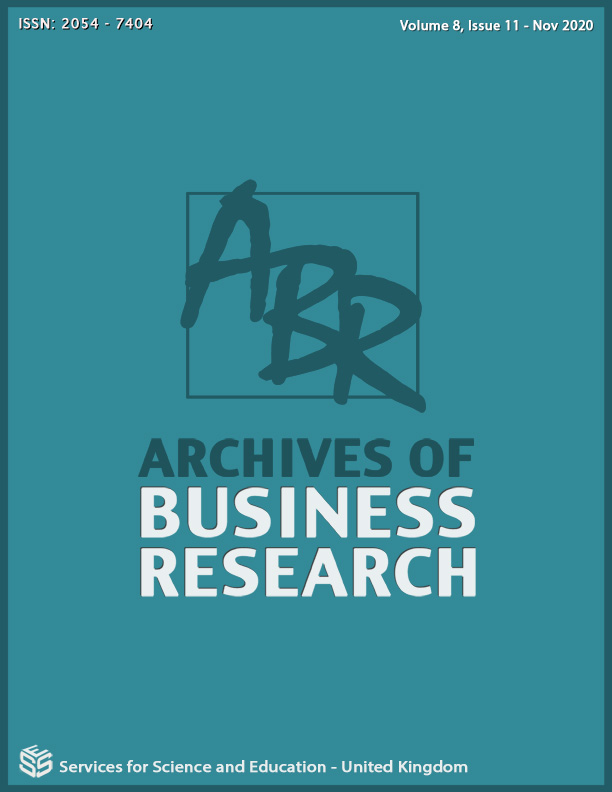Success Factors in Achieving Socio-Economic Development in Local Communities
DOI:
https://doi.org/10.14738/abr.811.9275Abstract
Previous studies have shown that socio-economic growth of rural areas can be affecting by a complex of factors. Poverty, for instance, is not a single factor but rather is characterized by several physical and psychosocial stressors. The partnership between private and public sectors in Malaysia has demonstrated empirical success as reinforced by the needs to address the gaps and demands of the local community. However, there are many rural areas that are rich with natural resources are not fully explore and develop. Rural areas indeed have significant natural, human, economic and cultural potential to support their developments. Over the years, the importance of economic diversification and rural development has been increasing significantly and has eventually opens up new opportunity to discuss on how to using resources at the full value and in a sustainable way. These initiatives would later provide crucial information that will complement relevant literatures for the stakeholders to plan for a better socio-economic development in Malaysia, in particular for this study, Raub. Therefore, this study examines the socio-economic demands and challenges of the local population in Raub, Pahang to recommend relevant assistance and interventions required. The overall results of this study reveal the gaps faced by the community in the District of Raub in the context of social and economy. This study was carried out via a structured survey throughout the district involving 300 respondents and also complemented with a face-to-face interview carried out with key stakeholders.
References
(5th Ed). Ft.Worth: Holt, Rinehart and Winston, Inc. Belmont CA: Wadsworth.
Bartlett, J. E., Kotrlik, J. W., & Higgins, C. (2001). Organizational research: Determining appropriate sample size for survey research. Information Technology, Learning, and Performance Journal, 19(1), 43-50.
Berk, L. E. (1994). Child Development, Boston: Allyn and Bacon Publishing.
Chirico S., Findlay J., Haywood N., McCutcheon G., Rai R., Scott M. & Wells M.(1998). Sustainable Community Development Guidelines. Bedfordshire Health Authority.
Cohen, J. (1988). Statistical power analysis for the behavioral sciences (2nd Ed.).
Hillsdale, NJ: Lawrence Earlbaum.
Creswell J. W. & Plano Clerk V. L. (2011). Designing and Conducting Mixed Methods Research. Sage Publications.
Dua, S., Sahni S., & Goyal D. P. (2011). Information Intelligence, Systems, Technology and Management. 5th International Conference ICISTM Conference Proceedings.
Fitzgerald, L. F., Gelfrand, M. J., & Drasgow, F. (1995). Measuring sexual
harassment: Theoretical and psyometric advances. Basic and Applied Social Psychology, 17 (4), 425-445.
Kenny & El (2016). The Socio Economy Gap Analysis of Local Communities in the District Bentong. International Journal of Academic Research in Economics and Management Research, 5 (3)
Krejcie, R. V., & Morgan, D. W. (1970). Determining sample size for research activities. Educational and Psychological Measurement, (30), 607-610.
Mazzeo, S. E., Bergman M. E., Buchanan N. T., Drasgow F., & Fitzgerald L.F. (2001). Situation-Specific Assessment of Sexual Harassment.Journal of Vocational Behavior, 59(1), 120-131
Ministry of Culture, Arts and Tourism.(2011). Homestay Statistics 2011.
Morgan, D. L., & Kreuger, R. A. (1993) ‘When to use focus groups and why’ in Morgan D.L. (Eds.) Successful Focus Groups. London: Sage.
Mulligan, J. (2013). “Hotspot Watersheds—Identifying Opportunity” in Natural Infrastructure: Investing in Forested Landscapes for Source Water Protection. T. Gartner, J. Mulligan, R. Schmidt, and J. Gunn, eds. World Resources Institute.
Peterson, M. (2004). Homestay in Malaysia.Transition Abroad Magazine. Nov/Dec,28(3)56-57.
Pittenger, D. (2003). Behavioral Research: Design and Analysis. McGraw-Hill Higher Education.
Rea, L.M., & Parker, R.A. (1992). Designing and Conducting Survey Research: A Comprehensive Guide. San Francisco: Jossey-Bass Publishers.
Ryu, S., Ho, S. H., & Han, I. (2003). Knowledge sharing behavior of physicians in hospitals, Journal of Expert systems with application, Vol. 25, No.1, pp. 113-122.
Sabitha, M (1999). Persepsi Terhadap Gangguan Seksual di Tempat Kerja di kalangan
Pentadbir di Sektor Awam. Seminar Penyelidakan UUM ke 5, Pusat
Penyelidakan dan Perundangan, 28-30 September.
Sabitha, M. (2005) Kaedah Penyelidikan Sains Sosial. Petaling Jaya: Prentice Hall.
Sekaran, U. (2003). Research Methods for Business: A Skill Building Approach (4th Ed). Singapore: John Wiley & Sons, Inc.
Siddiquee, N. A. (2007). Public service innovations policy transfer and governance in the Asia-Pacific region: The. Malaysian experience, JOAAG, Vol. 2. No. 1.
Strong, B., DeVault, C., Sayad, B.W., & Cohen, R. F. (2010). The marriage and family experience (8th Ed). Belmont, CA: Wadsworth/Thompson Learning
Suppiah V., Sandhu M. S., (2011) "Organisational culture's influence on tacit knowledge‐sharing behaviour", Journal of Knowledge Management, Vol. 15 Iss: 3, pp.462 – 477.
Wiersma,W. (2000). Research Methods in Education: An Introduction. Boston: Allyn and Bacon.






